
Horror is a film genre that seeks to elicit fear or disgust in its audience for entertainment purposes.
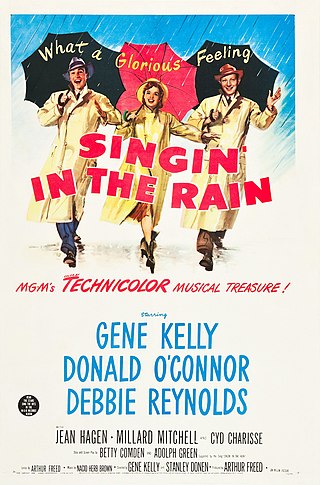
Musical film is a film genre in which songs by the characters are interwoven into the narrative, sometimes accompanied by dancing. The songs usually advance the plot or develop the film's characters, but in some cases, they serve merely as breaks in the storyline, often as elaborate "production numbers".

The action film is a film genre that predominantly features chase sequences, fights, shootouts, explosions, and stunt work. The specifics of what constitutes an action film has been in scholarly debate since the 1980s. While some scholars such as David Bordwell suggested they were films that favor spectacle to storytelling, others such as Goeff King stated they allow the scenes of spectacle to be attuned to story telling. Action films are often hybrid with other genres, mixing into various forms ranging to comedies, science fiction films, and horror films.
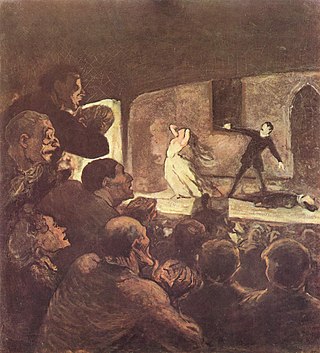
A modern melodrama is a dramatic work in which the plot, typically sensationalized and for a very strong emotional appeal, takes precedence over detailed characterization. Melodramas typically concentrate on dialogue that is often bombastic or excessively sentimental, rather than action. Characters are often flat, and written to fulfill stereotypes. Melodramas are typically set in the private sphere of the home, focusing on morality and family issues, love, and marriage, often with challenges from an outside source, such as a "temptress", a scoundrel, or an aristocratic villain. A melodrama on stage, filmed, or on television is usually accompanied by dramatic and suggestive music that offers cues to the audience of the drama being presented.

Social realism is the term used for work produced by painters, printmakers, photographers, writers and filmmakers that aims to draw attention to the real socio-political conditions of the working class as a means to critique the power structures behind these conditions. While the movement's characteristics vary from nation to nation, it almost always uses a form of descriptive or critical realism.

The contemporary culture of South Korea developed from the traditional culture of Korea which was prevalent in the early Korean nomadic tribes. By maintaining thousands of years of ancient Korean culture, with influence from ancient Chinese culture, South Korea split on its own path of cultural development away from North Korean culture since the division of Korea in 1945. The industrialization, urbanization and westernization of South Korea, especially Seoul, have brought many changes to the way Korean people live. Changing economics and lifestyles have led to urbanization—a concentration of population in major cities, with multi-generational households separating into nuclear family living arrangements. Today, many cultural elements from South Korea, especially popular culture, have spread across the globe and have become some of the most prominent cultural forces in the world.

An art film, art cinema, or arthouse film is typically an independent film, aimed at a niche market rather than a mass market audience. It is "intended to be a serious, artistic work, often experimental and not designed for mass appeal", "made primarily for aesthetic reasons rather than commercial profit", and containing "unconventional or highly symbolic content".

Pansori is a Korean genre of musical storytelling performed by a singer and a drummer.
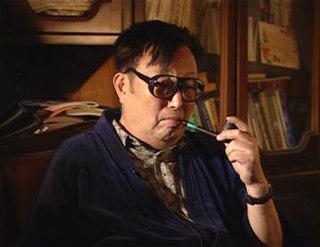
Kim Ki-young was a South Korean film director, known for his intensely psychosexual and melodramatic horror films, often focusing on the psychology of their female characters. Kim was born in Seoul during the colonial period, raised in Pyongyang, where he became interested in theater and cinema. In Korea after the end of World War II, he studied dentistry while becoming involved in the theater. During the Korean War, he made propaganda films for the United States Information Service. In 1955, he used discarded movie equipments to produce his first two films. With the success of these two films Kim formed his own production company and produced popular melodramas for the rest of the decade.

Classical Hollywood cinema is a term used in film criticism to describe both a narrative and visual style of filmmaking that first developed in the 1910s to 1920s during the later years of the silent film era. It then became characteristic of American cinema during the Golden Age of Hollywood, between roughly 1927 and 1960. It eventually became the most powerful and pervasive style of filmmaking worldwide.

Cinema of Europe refers to the film industries and films produced in the continent of Europe.
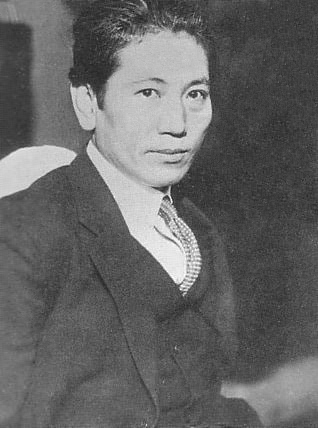
Benshi (弁士) were Japanese performers who provided live narration for silent films. Benshi are sometimes called katsudō-benshi (活動弁士) or katsuben (活弁).
Literary realism is a literary genre, part of the broader realism in arts, that attempts to represent subject-matter truthfully, avoiding speculative fiction and supernatural elements. It originated with the realist art movement that began with mid-nineteenth-century French literature (Stendhal) and Russian literature. Literary realism attempts to represent familiar things as they are. Realist authors chose to depict every day and banal activities and experiences.

Masala films of Indian cinema are those that blend multiple genres into one work. Masala films emerged in the 1970s and are still being created as of the 2020s. Typically these films freely blend action, comedy, romance, and drama or melodrama. They also tend to be musicals, often including songs filmed in picturesque locations.

Realism in the arts is generally the attempt to represent subject matter truthfully, without artificiality and avoiding speculative and supernatural elements. The term is often used interchangeably with naturalism, although these terms are not synonymous. Naturalism, as an idea relating to visual representation in Western art, seeks to depict objects with the least possible amount of distortion and is tied to the development of linear perspective and illusionism in Renaissance Europe. Realism, while predicated upon naturalistic representation and a departure from the idealization of earlier academic art, often refers to a specific art historical movement that originated in France in the aftermath of the French Revolution of 1848. With artists like Gustave Courbet capitalizing on the mundane, ugly or sordid, realism was motivated by the renewed interest in the common man and the rise of leftist politics. The realist painters rejected Romanticism, which had come to dominate French literature and art, with roots in the late 18th century.
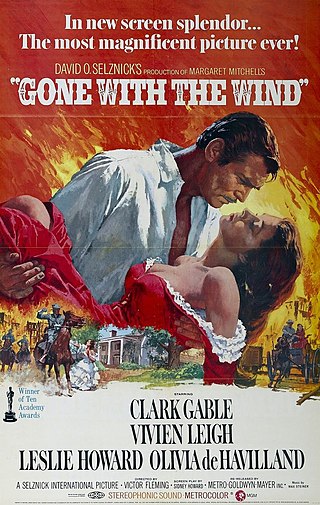
In film and television, drama is a category or genre of narrative fiction intended to be more serious than humorous in tone. The drama of this kind is usually qualified with additional terms that specify its particular super-genre, macro-genre, or micro-genre, such as soap opera, police crime drama, political drama, legal drama, historical drama, domestic drama, teen drama, and comedy-drama (dramedy). These terms tend to indicate a particular setting or subject matter, or they combine a drama's otherwise serious tone with elements that encourage a broader range of moods. To these ends, a primary element in a drama is the occurrence of conflict—emotional, social, or otherwise—and its resolution in the course of the storyline.
Shinpa (新派) is a modern form of theater in Japan, usually featuring melodramatic stories, contrasted with the more traditional kabuki style. Taking its start in the 1880s, it later spread to cinema.
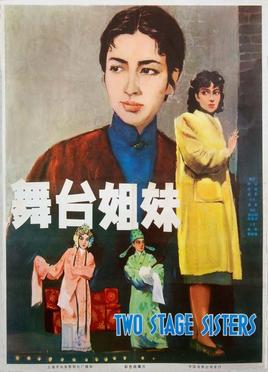
Two Stage Sisters is a 1964 Chinese drama film produced by Shanghai Tianma Film Studio and directed by Xie Jin, starring Xie Fang and Cao Yindi. Made just before the Cultural Revolution, it tells the story of two female Yue opera practitioners from the same troupe who end up taking very different paths in their lives: "one succumbs to bourgeois affluence and privilege, while the other finds inspiration and fulfilment in the social commitment associated with the May Fourth movement and the thought of Lu Xun.” The film documents their journey through abusive feudal conditions in the countryside before achieving success and prestige on the stage, meanwhile historically following Shanghai's experience under Japanese and KMT rule. This original screenplay depicts the socio-political changes encompassing China from 1935-1950 through the theatrical world of Shaoxing, and accordingly mixes both a Chinese aesthetic with Hollywood and socialist realist forms. The main protagonist is said to be based on the life of Xie Jin's friend and opera-veteran Yuan Xuefen.
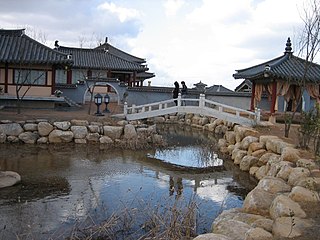
Sageuk in Korean denotes historical dramas, including traditional drama plays, films or television series. In English language literature sageuk usually refers to historical films and television series. In North Korea, South Korean historical dramas are generally called 고전 영화 or classic film.
The Zainichicinema refers to the transnational film industry of Japan, South and North Korea. With the main theme on the struggles or experiences faced by the resident Korean community or individuals in Japan, the Zainichi cinema is characterized by a wide range of film genres, which encompass melodramas to Yakuza films.















